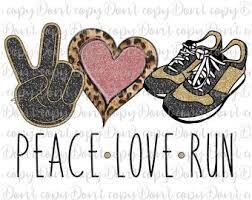Running News Daily
Running News Daily is edited by Bob Anderson. Send your news items to bob@mybestruns.com Advertising opportunities available. Train the Kenyan Way at KATA Kenya and Portugal owned and operated by Bob Anderson. Be sure to catch our movie A Long Run the movie KATA Running Camps and KATA Potato Farms - 31 now open in Kenya! https://kata.ke/
Index to Daily Posts · Sign Up For Updates · Run The World Feed
You Know The RICE Method For Recovery. Now Try PEACE & LOVE.
You've probably heard of the RICE method when you twist an ankle or tweak a knee: Rest, Ice, Compress, Elevate. It's ubiquitous for a reason, and yet emerging research is showing us that soft tissue injuries are a lot more complex than originally thought. By using methods like RICE for soft-tissue injuries, you may actually be doing your body more harm than good and delaying recovery.
It might be time to try a different approach.

But first, what constitutes a soft tissue injury? They're extremely common in runners, with some of the most ubiquitous being:
Almost all runners will have experienced these at some point. But if RICE isn't the best protocol, what do we do? Here's the good news:
A new acronym has been developed alongside this new research, and while it might be a mouthful, it could also boost your recovery more effectively than RICE-ing. Introducing: PEACE & LOVE.
Remember, this advice is for soft tissue injuries only. If you feel you may have sustained a more serious injury, like a fracture, seek immediate medical attention.
Here's the breakdown:
P- Protect
Immediately following a soft tissue injury, the single best thing you can do is take a load off. Restrict movement as much as you can for 1-3 days, depending on how bad the injury is. This reduces the risk of reaggravation and increased tissue bleeding. However, the timeframe is critical here. Research shows that prolonged rest following an acute soft tissue injury actually compromises tissue quality and strength, so don't veg out on the couch for two weeks straight or you'll inhibit blood flow and mobility necessary for proper healing.
How do you know when you should stop resting? Follow your pain. As the injury becomes less painful, gradually return to weight-bearing exercise.
Take Action: Protect your injury by avoiding movements - particularly those that cause increased pain - in the first couple days after injury.
E - Elevate
While there is limited evidence to support elevating an injured area as an effective recovery tool, it's low-risk and easy, plus it helps with "P" above. Bringing the injured area above the level of your heart can assist interstitial fluid (fluid found in the spaces around cells) flow out of the injured tissue.
Action Plan: Elevate the limb higher than the heart using something comfortable to rest it on, like a pillow, cushion, or the arm of your couch.
A - Avoid Anti-Inflammatories (Ice & NSAIDs)
Using ice and anti-inflammatory medications (NSAIDs) after an injury is a common practice to reduce swelling and pain. But there is actually very little high-quality evidence that supports the use of ice in treatment of soft tissue injuries, and increasingly more research that says don't.
Our bodies are smart, and the natural inflammatory process will support our tissues healing. By stopping or reducing this inflammation using external means like ice or medication, we are impairing our body's own healing. This, in turn, can impact our long-term tissue healing and possibly cause your injury to last longer. Natural inflammation will go down on its own as the body's protective instincts calm down.
Action Plan: Allow your body's natural inflammatory response for the first 48 hours. After this time period you can take anti-inflammatories.
C - Compress
A better way to reduce swelling is by intermittently using mechanical compression with a wrap, bandage, sock, or tape. Again, this serves the double purpose of also helping reduce movement. Just make sure you don't restrict movement to the point where you can't move the joint through its full range of motion.
Take Action: Use a compression bandage to reduce swelling, but do not wrap it so tight you get pins and needles or numbness. Compression can be used within comfort range throughout the day, however should NOT be used overnight.
E - Educate
Take time to learn about your specific injury. A physical therapy assessment will help you get reliable information and advice, and prevent similar injuries in the future. Ask your physical therapist about realistic recovery times and exercises to progressively load your injury while you recover. This will help you grade expectations and get you back to running as quickly as you can.
Action Plan: Active recoveries in soft tissue injuries often have the best outcomes. Seek advice from a medical professional and try to identify the causes of the injury and best exercises to strengthen the area.
L - Load
It is widely known that when you go to the physical therapist you usually get prescribed exercises - that's because most of those exercises are specifically designed to repair damaged tissues by gradually increasing the demands placed on them. This is known as mechanotransduction: the physiological process where cells sense and respond to mechanical loads. The goal should be to increase the amount you are doing progressively, without increasing pain. This will help the tolerance of your tissues (muscles, tendons, and ligaments) return to normal.
Action Plan: Listen to your body and let your pain levels help you progress back into normal activities.
O - Optimism
In the clinic, I always preface this with "I know this sounds silly but . . ." because patients tend to ignore this portion of the PEACE & LOVE talk. But compelling research shows that how you think and feel about your injury plays a big role in how you recover! Expecting a poor outcome, catastrophizing, or being overly fearful has been associated with longer recoveries from soft tissue injuries. Feeling optimistic and motivated - while staying realistic - will not only help you keep up with your physical therapy exercises, but it may also make your healing process even more efficient.
Action Plan: Be positive and confident in your recovery. This will optimize your results! Remember that these types of injuries are almost never the cause for long-term breaks from running.
V - Vascularization
Increasing blood flow to the affected area with pain-free aerobic activity has been shown to accelerate recovery and improve function. However: listening to your body's reaction and progressing gradually is critical. More pain in this case does not equal more gain.
Action Plan: Choose aerobic activities that are pain-free (walking, stationary cycling, swimming, jogging, rowing, etc.) and integrate them gradually into your routine, only in amounts that cause no pain.
E - Exercise
As shown above, many of the widely accepted interventions for soft tissue injuries have a poor evidence base. Not this one! Strong evidence shows that exercise aids in treatment of soft tissue injury. It can also reduce the risk of a recurring injury by improving strength, mobility, balance, and proprioception (the body's own spatial awareness).
Again, it is important to seek a physical therapist's help when choosing exercises to achieve optimal strength and mobility as you recover.
Action Plan: Build your mobility, strength, and proprioception back up progressively during your recovery by slowly returning to exercise.
The Takeaway:
Being a freshly injured runner can be scary, upsetting, annoying, and confusing. Instead of reaching for the ice immediately, lead your recovery with PEACE & LOVE: unload the area, listen to your pain, keep a proactively positive mindset, and seek a physical therapist to begin reloading your tissues and expedite healing. Following these new protocols will help you heal faster and get you back to the trails sooner.
Kristen Kennedy holds a BSc in kinesiology from Dalhousie University and a Doctor of Physical Therapy degree from the University of Montana. She currently practices in the UK, specializing in sport physical therapy with a focus on running. Kristen has been a yoga teacher to athletes for six years and is co-founder of "Made By Movement," an online yoga, Pilates, and mobility studio.
by Trail Runner Magazine
Login to leave a comment




